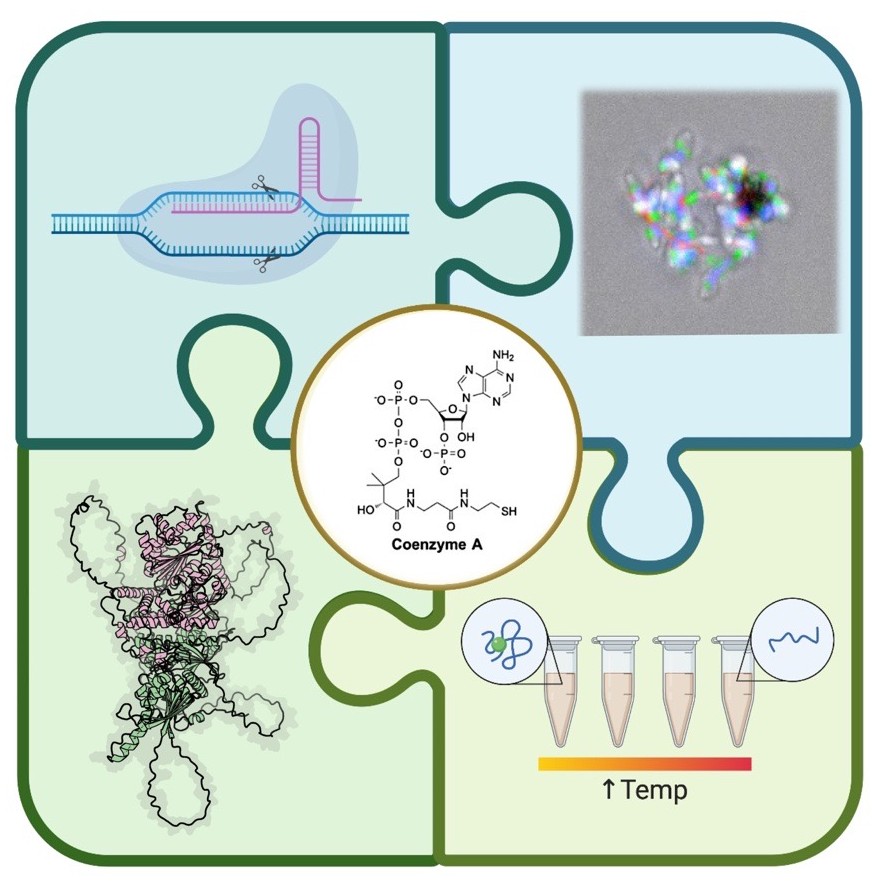BSB PhD Exit Seminar: Towards understanding and targeting the Plasmodium falciparum CoA biosynthesis pathway
Pantothenate, a precursor of the fundamental enzyme cofactor coenzyme A (CoA), is an essential nutrient for the intraerythrocytic stage of the human malaria parasite Plasmodium falciparum.
Speakers
Event series
Content navigation
Description

ABSTRACT
Pantothenate, a precursor of the fundamental enzyme cofactor coenzyme A (CoA), is an essential nutrient for the intraerythrocytic stage of the human malaria parasite Plasmodium falciparum. Pantothenate kinase (PanK) catalyses the first step of the CoA biosynthesis, which has been suggested to determine the rate of CoA biosynthesis in many organisms. In contrast, the second step, mediated by phosphopantothenoylcysteine synthetase (PPCS) has been proposed as the flux control step of the parasite CoA biosynthesis. P. falciparum expresses two PanKs, PfPanK1 and PfPanK2, which assemble into a unique heteromeric complex with the potential regulatory protein, Pf14-3-3I. Similarly, the parasite expresses two putative PfPPCSs, PfPPCS1 and PfPPCS2, neither of which have been characterised.
In this study, site-directed mutagenesis of key residues in PfPanK1 and PfPanK2 was performed. Bioinformatic and mutagenesis studies revealed that the heteromeric PfPanK complex only possesses one functional active site. A parasite line that allows inducible knockdown of PfPanK2 was generated and PfPanK2 was found to be essential for normal intraerythrocytic proliferation of P. falciparum. The PfPanK complex was expressed in the insect cell protein expression system. The expressed components naturally formed the complex in situ and, crucially, was functional. Data was also generated consistent with Pf14-3-3I not being essential for PfPanK activity.
Transgenic parasites overexpressing a GFP-tagged PfPPCS1 or PfPPCS2 were generated. All PPCSs described to date function as homodimers, but results from western blots, fluorescence-coupled size exclusion chromatography and mass spectrometry revealed that the two PfPPCSs associate into a single, functional PPCS heteromer that, unlike any other eukaryotic PPCS reported to date, is unable to use ATP for activity. Bioinformatic analyses uncovered a prokaryote-like helical component of PfPPCS as important for the nucleotide specificity and potentially holding the key for its stringency for CTP. Moreover, we show that the complex is the target of multiple antiplasmodial pantothenate analogues and influences the activity of others.
Location
Please note: this seminar will be held in the Eucalyptus Seminar Room and via Zoom, details are included below.
Eucalyptus Seminar Room, S205,
Level 2, RN Robertson Bldg (46)
Please click the link below to join the webinar:
https://anu.zoom.us/j/81338101078?pwd=o0yCnMDAiaskMRPol944TF7sSLvobM.1
Webinar ID: 813 3810 1078
Passcode: 945243
Canberra time: please check your local time & date if you are watching from elsewhere.
